


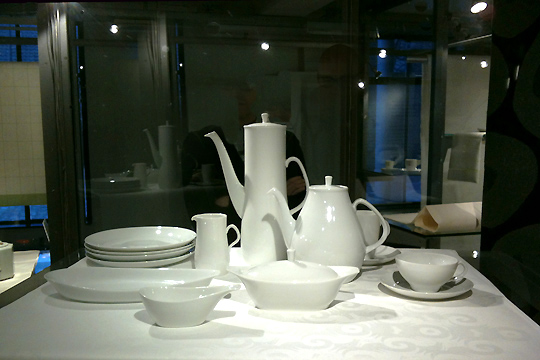
Robert Fock in his book 'Maastrichtse serviezen 1917- 1937' mentions that this service was made in small numbers only. This edition never exceeded 6500, whereas other services easily ran to 100,000. This explains the trouble that collectors currently have in acquiring a set.
We do not know how many sets have survived.
But Thea is not the only remarkable china created by Bellefroid. He designed dozens of special dinnerware sets, many of which were the subject of international praise.
In 1957 he created the famous Noblesse for Mosa, which won the gold medal at the Milan Triennial Exhibition.Dark green with brown, cream-coloured, with flowers or with linear decorations - Thea was made in many variations. The most successful edition is tobacco-coloured, with red and orange decorations. This really enhances the design.
photo: forum.mestreechonline.nl
photographer unknown
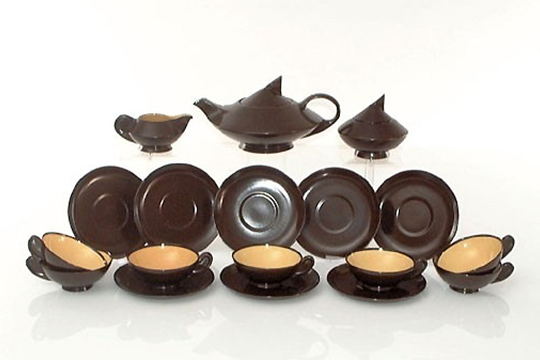
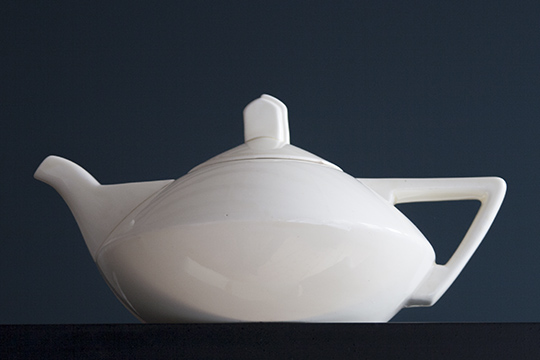
Graceful
The one characteristic that connects this service with Chris van de Hoef’s 4300 is that it is so graceful. And it is refreshingly funny as well. The little triangle on top of the tea pot’s and sugar bowl’s lids is almost like a cheeky shark’s fin. And the cream jug looks a bit like a chicken, but without it ever becoming banal.
Where does such a striking design originate? Several studies report a connection with the Bauhaus. And there may have been English influences too. But there is no obvious direct model. Bellefroid’s design seems entirely original. And it has remained unusual in the sense that it had few followers. Almost at the same time Thea was released, the competition (Société Céramique) marketed Yvonne. The two tea pots show a vague resemblance, mostly in the combination of a rounded bottom with a triangular lid (at least, if the lid is seen in profile). But Thea’s lines are stronger and more convincing.

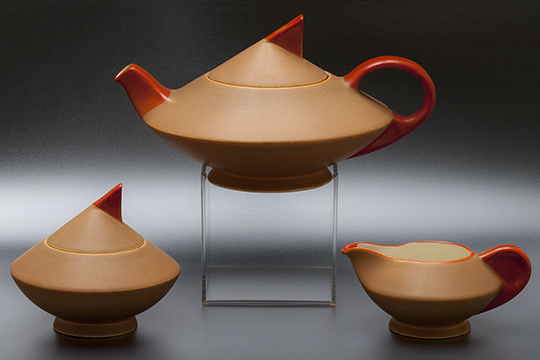
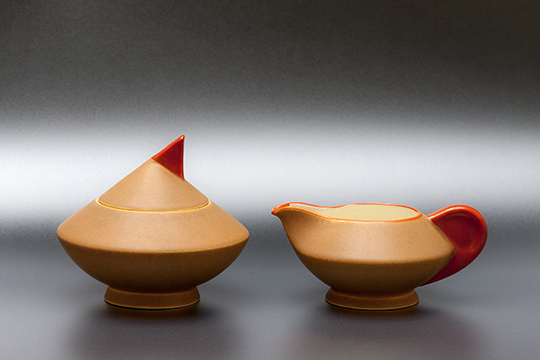

tea pot 'Thea'
Edmond Bellefroid
app. 1933
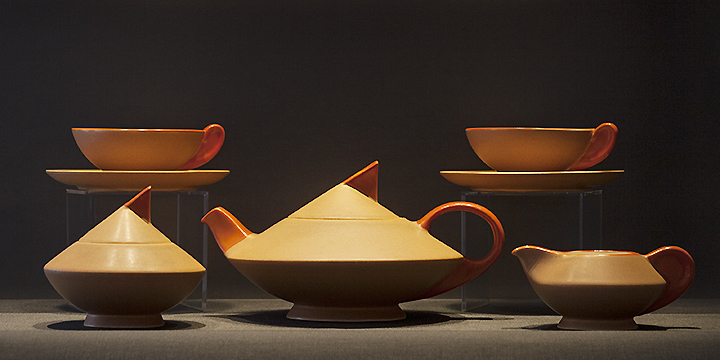
Connoisseurs agree on Edmond Bellefroid’s tea service Thea: this is one of the most innovative designs of the 1930s. The tea pot still strikes us as modern and topical. The austere lines of its triangular lid, with its cheeky little red triangle for a knob, makes quite a combination with the soft, round shape of the pot’s bottom and handle. The model is perfectly balanced. It refers back to classical art, to the discus and the oil lamp, and yet it is modern in its geometric play of triangles and circles.
Highlights of 100 years Dutch design
part 2
